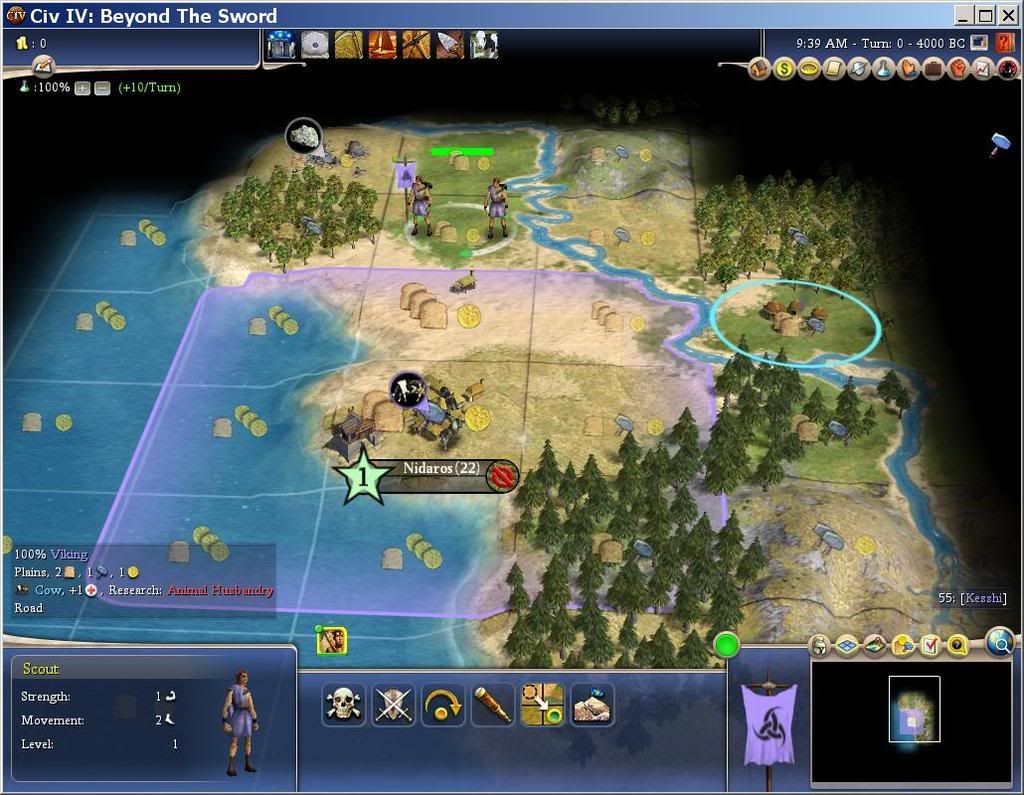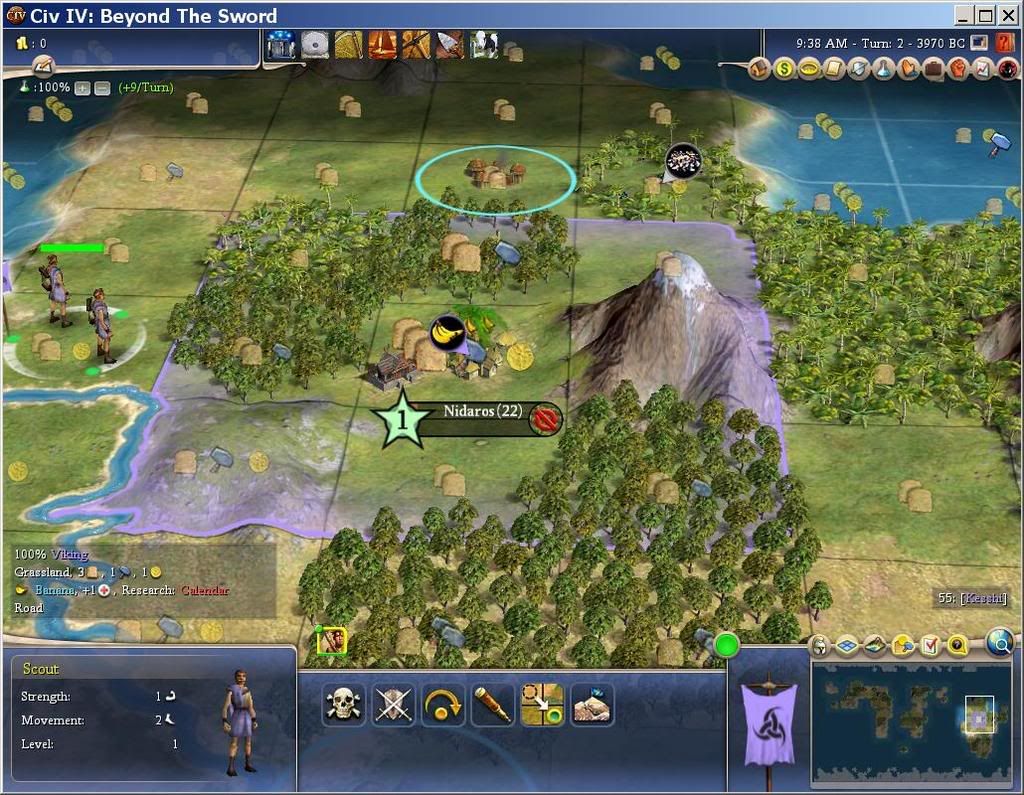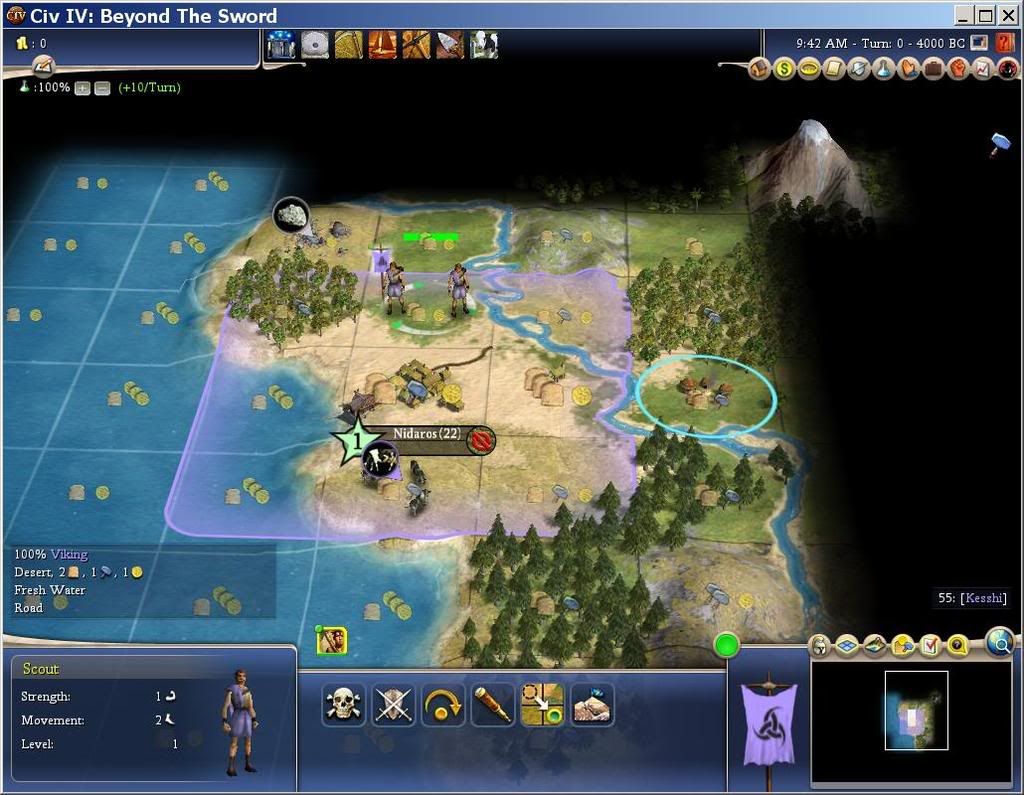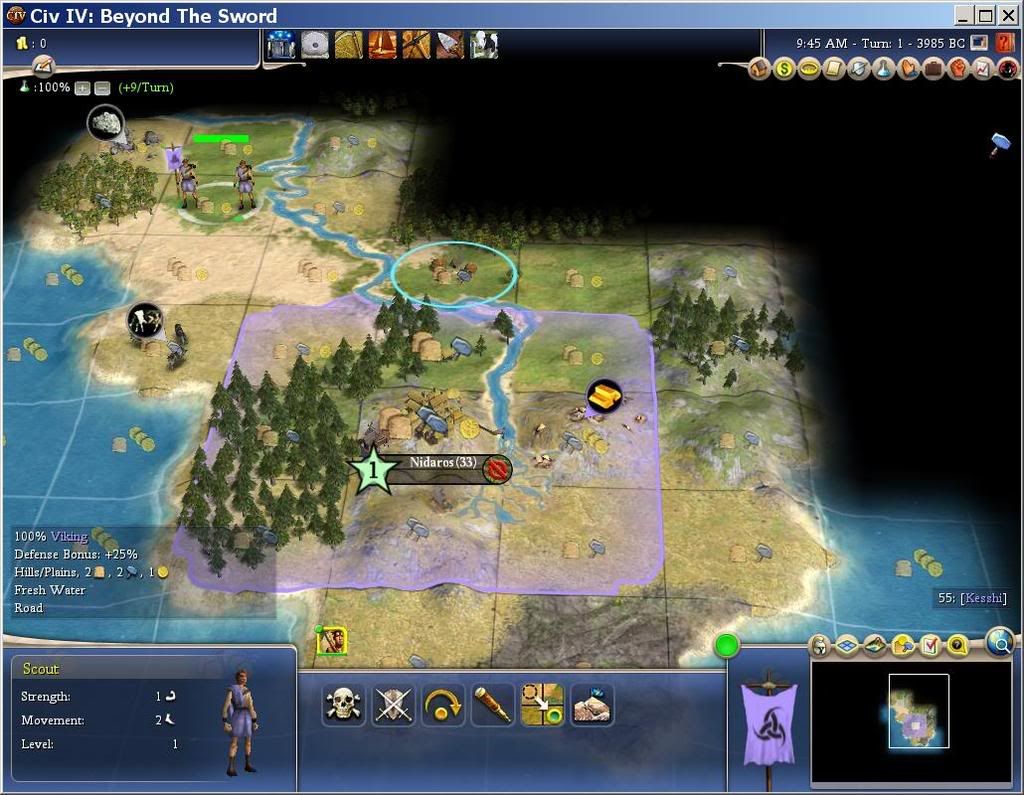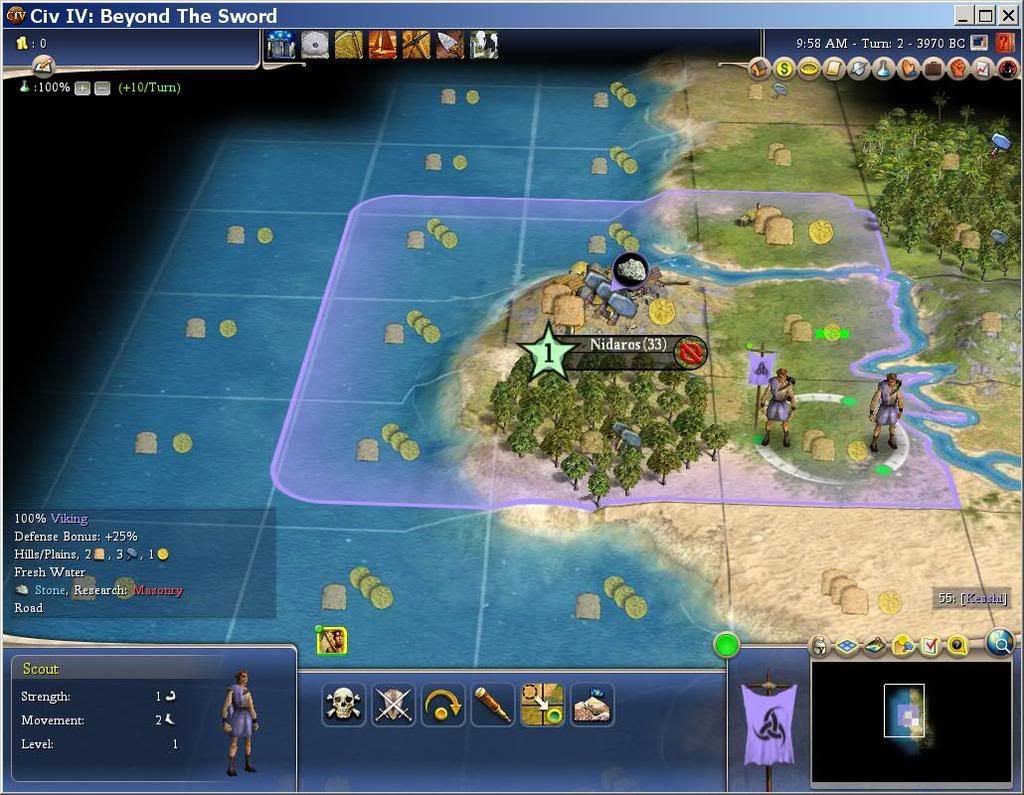Pardon me, but it's been a very long time since I played Civ, and so I am having trouble remembering exactly how the home tile of a city is treated.
1) Does it always have the same food/production/commerce value regardless of what's on it, or does it experience bonuses from resources and tile features like every other square?
2) If there's e.g. gold or silver on the center city tile, must it be mined to obtain the bonus? CAN it be mined at all?
Sorry for this noob question, I realize it is probably answered SOMEWHERE here on the forums but I was hoping someone could save me a couple hours of digging through old threads
1) Does it always have the same food/production/commerce value regardless of what's on it, or does it experience bonuses from resources and tile features like every other square?
2) If there's e.g. gold or silver on the center city tile, must it be mined to obtain the bonus? CAN it be mined at all?
Sorry for this noob question, I realize it is probably answered SOMEWHERE here on the forums but I was hoping someone could save me a couple hours of digging through old threads


 , your city would be 3
, your city would be 3 1
1
